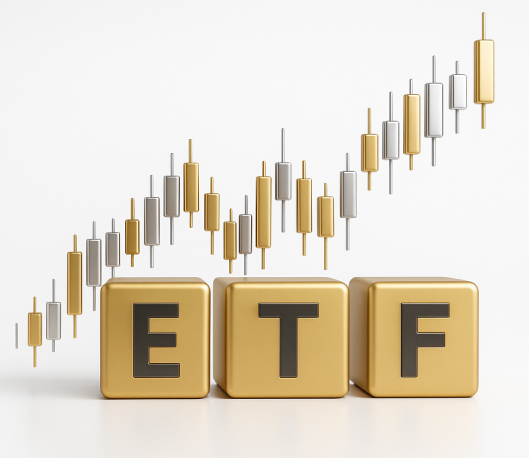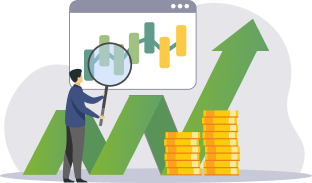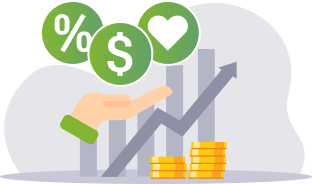- Giao dịch
- Thị trường
- ETF
CFD ETF
CFD ETF trading is an ideal way to participate in ETF trading without owning the actual asset.
Instead of purchasing the ETF itself, you trade a CFD that mirrors its price movements. This means you can trade in both rising and falling markets, and you can use leverage to control a larger position with less initial capital.
Many traders choose ETF CFDs because they offer exposure to entire sectors in just one instrument.

Popular ETF_S to Trade
Some ETF_S are more active and more popular among traders th an others. Instruments with high trading volume and frequent price movement have several practical advantages such as:
Bạn đang tìm kiếm một công cụ giao dịch?
Bạn hãy chọn sàn giao dịch và loại tài khoản
Online CFD ETF Trading
When you Trade CFDs on ETFs, you’re essentially speculating on the price of an ETF index fund. Simply put, instead of buying shares in an ETF that tracks the S&P 500, you could open a CFD position and profit from the index’s movement without owning any stocks directly.
This approach is especially useful for online traders who want fast, flexible access to markets. Online platforms make it easy to open, manage, and close ETF CFD positions at any time during market hours. Whether it's technology ETFs, energy ETFs or broad market funds, online CFD ETF trading gives you an easy way to gain exposure to a variety of assets from a single account.
What is CFD ETF Trading?
At its core, ETF trading means buying or selling exchange traded funds, which are investment products that track a basket of assets - stocks, bonds, or commodities. An ETF is traded on stock exchanges, just like regular shares.
When you trade CFDs on ETFs, you don’t own the actual ETF. Instead, you trade a contract with your ETF broker that reflects the ETF’s market price. If the ETF price rises and you predicted correctly, you make a profit. If the price falls you can also make a profit by opening a short position.
In short, owning an ETF is like buying an entire basket of instruments; trading ETF CFDs is like betting on whether the price of the basket will rise or fall, without actually carrying the basket itself. That simple.

How to Trade CFDs on ETFs?
Starting with CFD ETF trading is straightforward, especially if you’re familiar with online trading platforms.
Here are the steps
- Step 1: Choose a regulated ETF broker – This ensures your funds are secure and you get fair market prices.
- Step 2: Select ETF – It could be a broad market ETF like SPDR S&P 500, a sector ETF like iShares Tech, or even a commodity based ETF.
- Step 3: Decide whether to go long or short – Expecting the ETF to rise? Go long (buy). Expecting it to fall? Go short (sell). Sounds easy, yet it takes skill to know when to go long or short. Start by mastering technical analysis and combine with fundamental analysis.
- Step 4: Set your trade size and leverage – CFDs allow you to use leverage, remember that leverage increases both profits and risks.
- Step 5.Use risk management tools – Stop-loss and take-profit orders help protect your account from unexpected swings.
- Step 6. Monitor and close the trade – You can exit at any time while the market is open, locking in profits or minimizing losses.
For example, if you believe renewable energy will keep growing, you could open a CFD trade on a clean energy ETF. On the other hand, if you think tech stocks are overpriced, you could short a technology ETF through CFDs.

Key Benefits of CFDs on ETFs Trading
Trading ETFs with CFDs have several advantages
- Flexibility in rising and falling markets – You can profit from both upward and downward price moves.
- Leverage – Control larger positions with a smaller initial deposit.
- Diversification in one trade – ETFs represent a basket of assets, giving exposure to sectors or themes instantly.
- No ownership costs – You don’t have to manage actual shares or pay fund custody fees.
- Online accessibility – Enter and exit positions quickly using modern trading platforms.
In short, CFDs on ETFs combine the diversity of ETFs with the speed and flexibility of CFDs.

More Markets to Consider
An ETF is an actual fund that holds a collection of assets like stocks, bonds, or commodities, and you own shares when you buy it. A CFD, on the other hand, is a contract that mirrors the ETF’s price without giving you ownership of the fund itself. With CFDs, you can trade on margin and take advantage of both rising and falling prices, while owning ETFs typically means holding them long-term.



